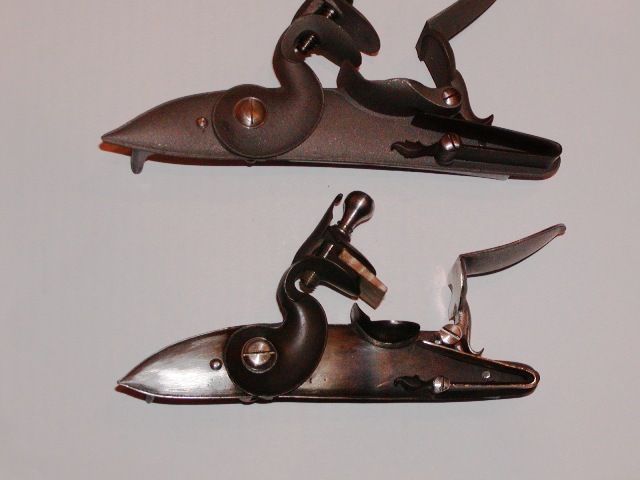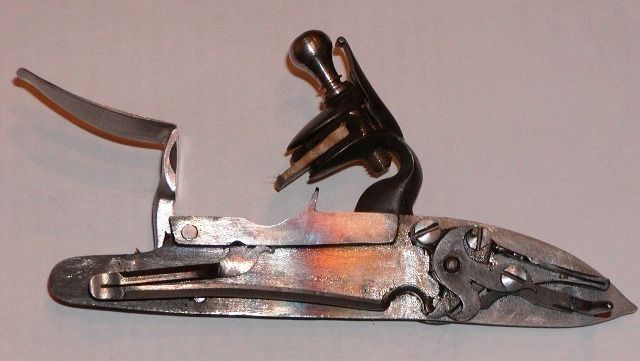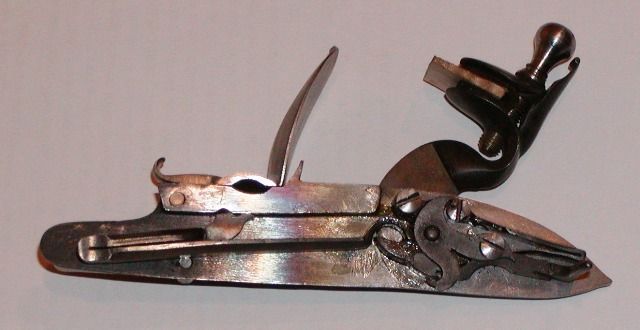- Joined
- Nov 26, 2005
- Messages
- 5,017
- Reaction score
- 9,963
Hi Folks,
Almost to the finish line. I just have to clean up the whiskers, carving and moldings, and then final scrape the stock. I need to countersink all screws, permanently attach the sheet brass buttplate, and clean up the brass and lock. The buttplate return will have a simple single line engraved border. The sideplate represents a rural Yankee gunsmith’s sheet brass copy of a sideplate from a 1730’s French fusil. It will have simple engraving of a dragon head, volutes, and medallion. The engraving will be a bit cartoon-like without a great deal of shading. Most engraving from mid-18th century NE fowlers that I examined seems to be like that. The barrel tang carving is simple and looks like a potted plant growing from the molding surrounding the tang. No transition linking that molding to the leaves, just plunked there. Again, that seems to be the way many of the early NE fowlers were carved. The cherry stock will be tinted a little before finish. I won’t use any lye compounds because I don’t really care for the appearance.
dave
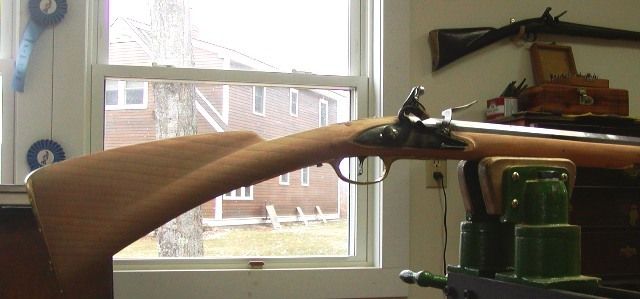
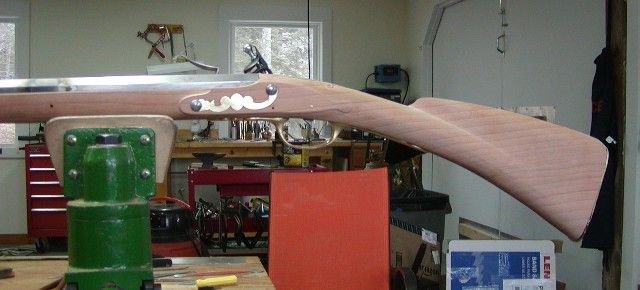
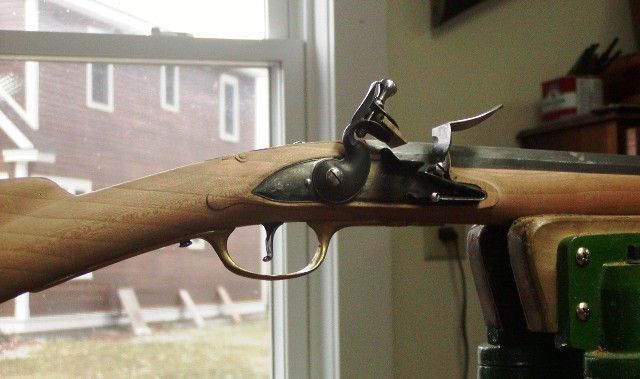
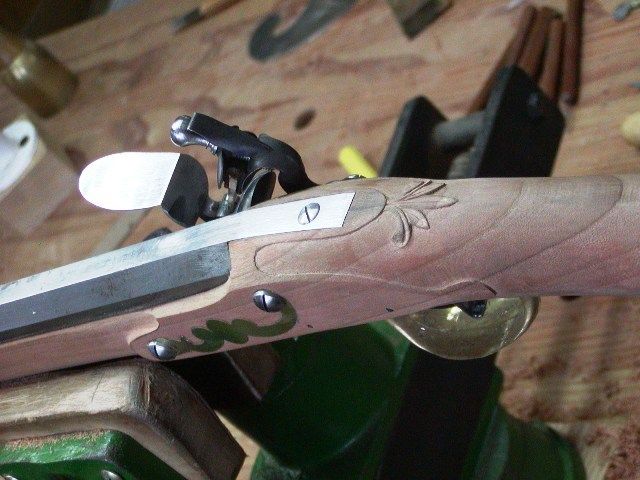
Almost to the finish line. I just have to clean up the whiskers, carving and moldings, and then final scrape the stock. I need to countersink all screws, permanently attach the sheet brass buttplate, and clean up the brass and lock. The buttplate return will have a simple single line engraved border. The sideplate represents a rural Yankee gunsmith’s sheet brass copy of a sideplate from a 1730’s French fusil. It will have simple engraving of a dragon head, volutes, and medallion. The engraving will be a bit cartoon-like without a great deal of shading. Most engraving from mid-18th century NE fowlers that I examined seems to be like that. The barrel tang carving is simple and looks like a potted plant growing from the molding surrounding the tang. No transition linking that molding to the leaves, just plunked there. Again, that seems to be the way many of the early NE fowlers were carved. The cherry stock will be tinted a little before finish. I won’t use any lye compounds because I don’t really care for the appearance.
dave









